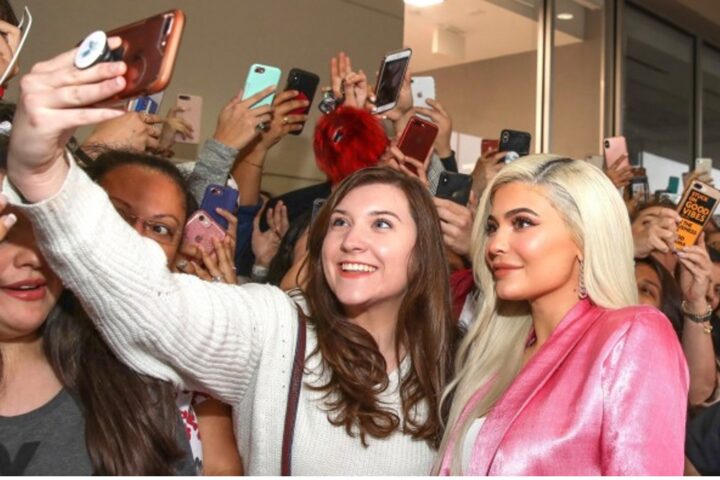Introduction
The Indian Fashion industry has immense potential and is gradually making its mark at the global level. Indian textiles and apparels have been extremely sought after since time immemorial. It is one of the oldest industries in the Indian economy that has been flourishing and growing since its inception. According to Forbes India, the global consumer spending on fashion crossed US$1.5 trillion in 2015 and India’s fashion retail market is set to grow to US$115 billion by 2026. In the past decade, there has been a stark shift in the perception of garments in the Indian market as durable item, to something that is shopped seasonally to keep up with the latest trends and fashion. This increases the number of clothes that end up in local landfills. Ironically even after these landfills are overloading with discarded fabric, India imports large quantities of second-hand clothes from countries across the globe. There is a dire need for fashion brands and consumers to opt for the path towards the path of sustainable fashion.
You’ve probably heard or used the term sustainable fashion, but what does it mean?
When clothes, shoes, accessories are manufactured in a way where to goal is to be considerate to the environment and humanity by keeping in mind the environment and socio-economic aspects of production. Sustainable fashion involves working towards a system that does not leave a negative footprint.
In the words of designer Gautam Gupta” if we do not start embracing sustainable fashion now, the future is grim”
What is the Legal position regarding sustainability in India?
Several acts have been introduced to protect the environment from the devastating effects of industrial growth, these include
- The Factories Act, 1948,
- The Water (Prevention and Control of Pollution) Act, 1974
- The Environment Protection Act, 1986
- The Air (Prevention and Control of Pollution) Act, 1981
- The National Green Tribunal Act 2010
- The Hazardous Waste Management Rules
The Namami Gange Mission was launched with the key objective of working towards achieving SDG 6, major components include sewerage project management, sanitation, tackling industrial pollution, water use efficiency and quality improvement, ecosystem conservation and Clean Ganga Fund. Similarly, National Clean Air Programme was launched in 2019 to keep a check on air pollution and monitor the quality of air. Indian courts have recognized a clean and pollution-free environment as a fundamental right under article 21 of the constitution and the same can be seen in the judgement of MC Mehta vs Union of India. The courts have applied the principle of ‘Polluter Pays’ to impose liability on the person who pollutes the environment. Criminal Liability and damages can be imposed on the violation of these environmental laws. To protect the workers, employment and labour laws to ensure a minimum wage for workers, wildlife protection laws to prohibit the import and export of exotic skins and furs for clothing and accessories.
However, there is a huge difference between the support on paper and in spirit, Elle recently compiled a list of Sustainable Clothing Brands that people should turn to, this does not yet include an Indian brand, India still has a long way to go in terms of production of sustainable products to match the standard at the global level.
Let’s look at some of these sustainable brands to understand what are they doing differently?
The production of jeans has been notoriously known for polluting various natural resources, Re/Done has found an alternative their work embraces the unconditional love for jeans, they repurpose old jeans into current styles. Kendall Jenner, Emily Ratajkowski and the Hadid sisters are often seen wearing the brand. RE/Done believes that rebuilding jeans is an art and they are fully committed to the path of sustainability and are here to stay.
They recently launched eco sneakers made from recycled leather and material taken from discarded plastic bottles, even the laces are organic cotton and the soles are made from a recycled rubber compound.
The New York-based label is making sustainable fashion fun, they use deadstock material, upcycled tie-dye sweatshirts and rhinestone-encrusted water bottle labourwhich was carried by musician Maggie Rogers at the 2019 Billboard Women in Music event.
The designer Hillary Taymour told Vogue “We have fabric made from rose petals, so we’re printing on and hand-dying that. I would say 60 per cent of the collection is made from that fabric. It’s the most sustainable version of silk that we can make today.
Now let’s look at some brands closer to home that are putting their best foot forward to make their brand sustainable
This is an organic fashion brand that believes that a garment is a labour of love, the love for the plant and the love for good designs. Their products are made from 100% organic cotton grown in a fair-trade factory which is safe and does not promote child labour. As they do not use fur, wool, leather and silk it is vegan. The buttons are made from coconut shells and they follow a zero-plastic packaging policy. They offer a wide range of products for men and women and even cater for organic canvas bags!
This ethical fashion label caters for contemporary womenswear from Udaipur, Rajasthan. All the fabrics used are upscaled and the packaging is eco-friendly, they have a no-waste policy and they use natural dyes. The brand focuses on being environmentally friendly and is verified by PETA.
It is one of the first homegrown PETA approved vegan and cruelty-free brand in India. They have a wide range of products ranging from Lipsticks, highlighter sticks, eyeshadows and a lot more! They have taken the initiative to go the extra mile by starting a recycling program where you can send them the empty containers and they forward it further for waste management. The affordability of their products adds another star.
India may be small compared as compared to the global sustainable fashion industry, but the efforts are gradually taking shape. In February 2017, India won the ‘Best Country Award’ for its first exhibit at the International Fashion Showcase of London Fashion Week, curated by Gautam Vazirani of IMG Reliance. Ruchika Sachdeva of Bodice Studio won the International Woolmark Prize in the womenswear category for 2017-18. They support ethical fashion and award the best global talent for their work with Merino wool. On Lakmé Fashion Week the focus of Sustainable Fashion Day was #NorthEastMojo, a collaboration with the United Nations to boost the sustainable economy of the Northeast. It is clear that the awareness around the importance of sustainable products is steadily growing for good.
The global effort to make the fashion industry more sustainable
The importance of sustainable fashion is catching on across the world, in 2018, Under the auspices of UN Climate Change, fashion stakeholders worked to identify how the textile and fashion industry could move reducing climate action. This led to the creation of the Fashion Industry Charter. It aims to achieve the vision of net-zero greenhouse gas emissions by 2050. In 2020 the signatories of the charter came up with a Playbook for Climate Action, for industry stakeholders, this book was intended to be a guidebook for the small and medium scale fashion companies who had not yet taken action against climate change but want to contribute. Almost a hundred brands have signed the UN Fashion Industry Charter these include some of the most popular fashion brands like Chanel, Mango, Ralph Lauren and many more.
At the 4th UN Environment Assembly in Nairobi, in March 2021, the UN Alliance for Sustainable Fashion was launched. The UN Alliance aims to work at reducing the negative impact of the fashion industry on the environment by identifying challenges and ensuring that the fashion value chain actively contributes towards the achievement of the Sustainable Development Goals targets.
References
Elle. (n.d.). Retrieved from https://www.elle.com/uk/fashion/what-to-wear/g22788319/sustainable-fashion-brands-to-buy-from-now/
Forbes India. (2018, May 23). Business and Strategy. Retrieved from https://www.forbesindia.com/blog/business-strategy/whats-trending-in-fashion-industry/
Krida Legal. (n.d.). Retrieved from http://www.kridalegal.com/post.php?id=40
Vouge. (n.d.). Fashion. Retrieved from https://www.vogue.in/fashion/content/how-collina-strada-is-making-sustainable-fashion-fun-hillary-taymour-on-her-latest-eco-conscious-collection









